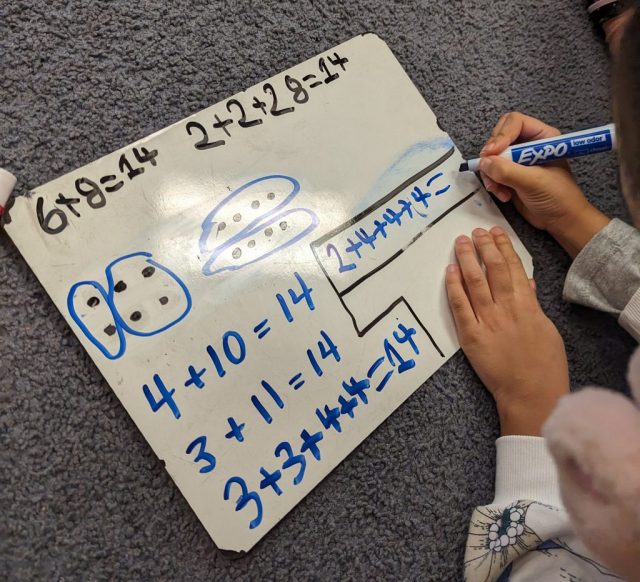Math routines are an important part of our math program. One such routine is called “Which One Doesn’t Belong?” or WODB in English. In class, we’ve translated it to Quel est l’intrus?
Students must identify and explain which image doesn’t belong. There may be a few possible answers. Rather than it be about finding the ‘right’ answer, the focus is on explaining why their answer makes sense to them.
In math, we’re learning that we need to be precise and logical with our ideas. Students practice a few core competencies in this activity – communication, critical thinking, and creative thinking.
Recently, on a hike, I spotted four different mushrooms. Together, we discussed which one didn’t belong. One student reasoned that Mushroom #1 didn’t belong because it was more narrow than the others. Another said that Mushroom #4 didn’t belong because it was the only one growing on the ground rather than on trees. Someone else added that Mushroom #4 was the only one that grew alone rather than in clusters.
One student reasoned that Mushroom #1 didn’t belong because it was more narrow than the others. Another said that Mushroom #4 didn’t belong because it was the only one growing on the ground rather than on trees. Someone else added that Mushroom #4 was the only one that grew alone rather than in clusters.
This math routine had us talk about form, size, colour, quantity, and orientation. Not only were we thinking like mathematicians but also like scientists!
We were curious to identify these local fungi. With the help of books and the Internet, we think:
- Mushroom #1 might be “Yellow Brain Jelly” or “Witches’ Butter”
- Mushroom #2 might be Oyster Mushrooms or Angel Wing Mushrooms
- Mushroom #3 might be ???
- Mushroom #4 looks like a Bolete – students found a picture of a “Weeping Bolete” and thought it had similar colours but that fungi seems more common in Europe
Finally, we talked safety. We understood to never touch or eat wild mushrooms. There are too many lookalike mushrooms, and it’s often tricky to tell apart poisonous ones from non-poisonous ones.
Students understood that it’s always best to simply observe a mushroom. In doing so, we respect their place in our local ecosystems and leave them be.


























